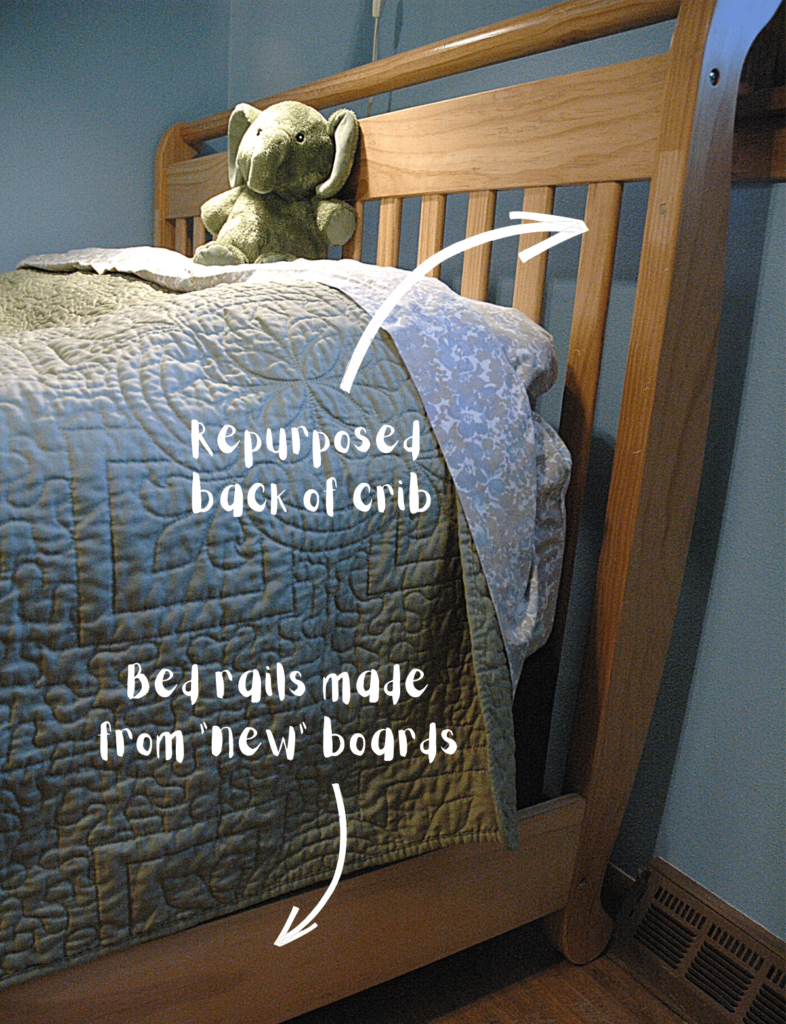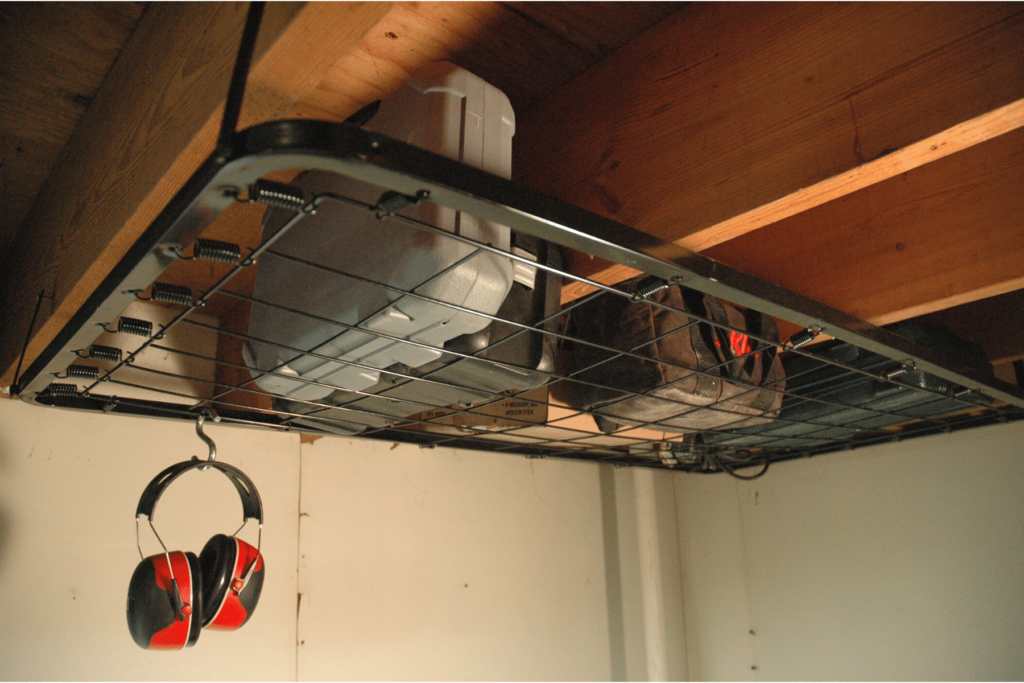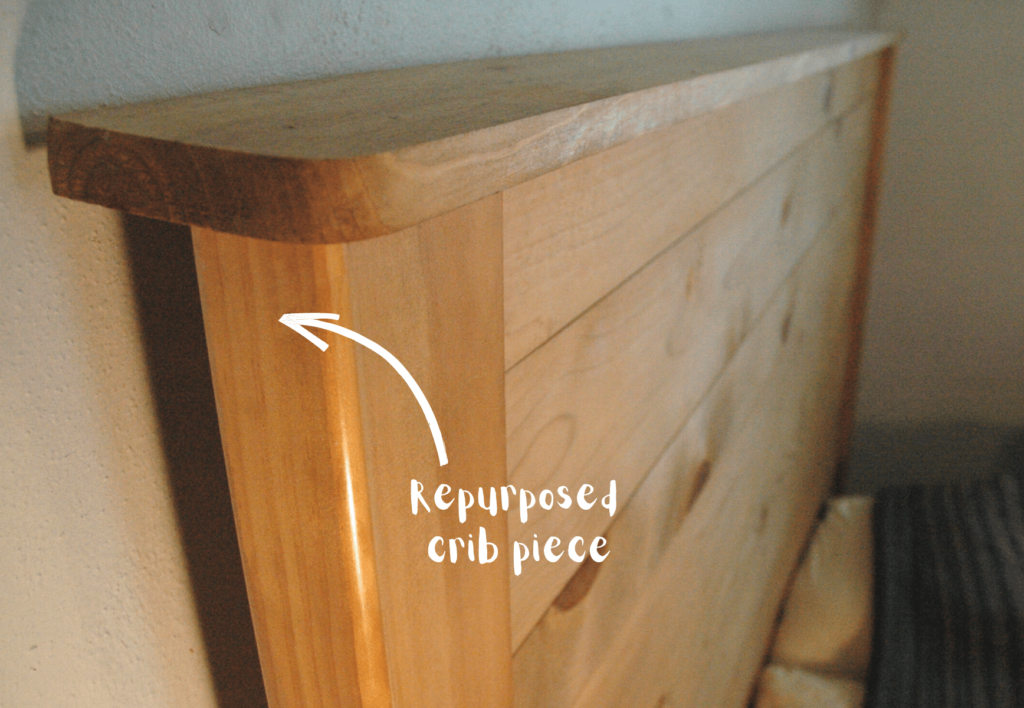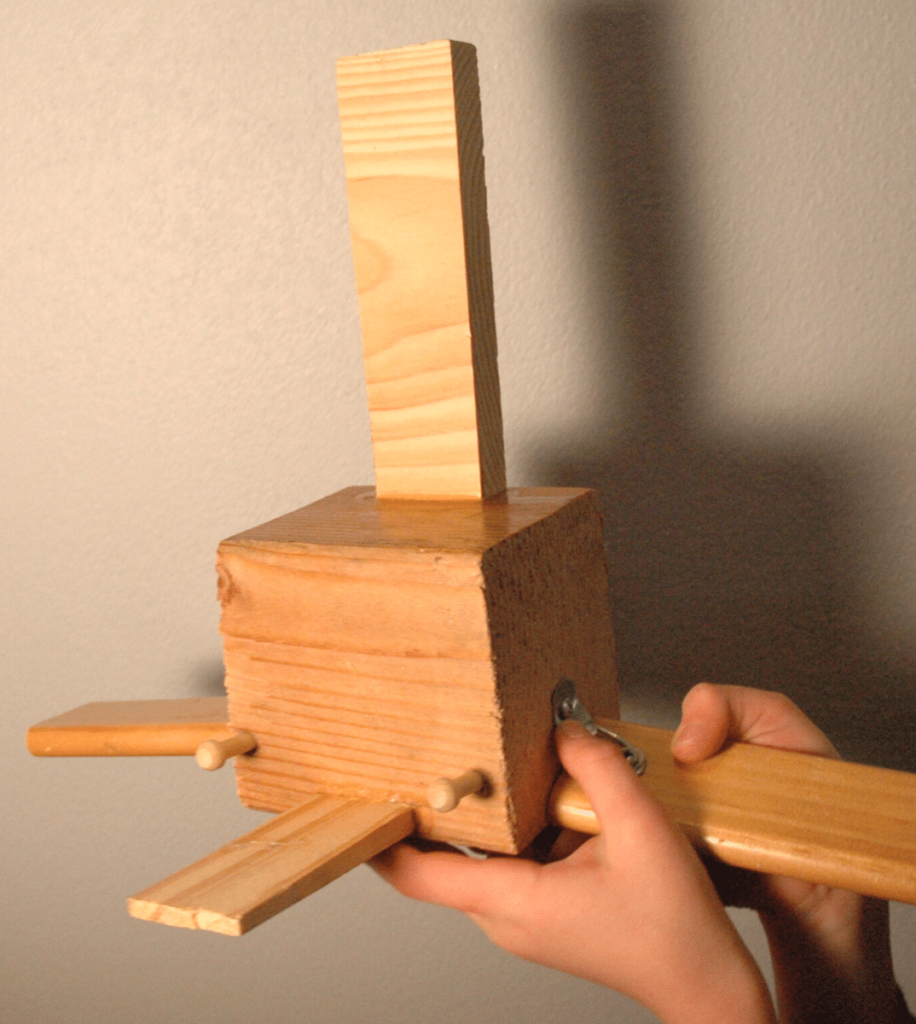This post was last updated on July 13th, 2022 at 09:52 am
One of the best ways to maximize the value of things in your home is to repurpose them. This is especially true for children’s clothes, toys, and furniture. You can buy these things one day and discover your children have outgrown them the next. Sometimes, it makes sense to sell used items. But sometimes you can save more money by finding new uses for old things. The key is to keep your mind open to the possibilities because they are near infinite.
I recently discovered just how many different ways you can repurpose a crib. While my goal wasn’t to use every last bit of our kids’ former crib, that’s almost what happened. Parts from it ended up being turned into a full-sized bed, a shelf for the basement workshop, trim for a DIY headboard for our master bedroom and parts for wooden toys.
Here’s how the crib took on four new uses:
No. 1: Full-bed conversion

We had a convertible crib, which came with pieces to turn the crib into a toddler bed. When it came time to convert the toddler bed into a full-sized bed, I saved about $30 by doing a homemade conversion instead of buying the factory conversion kit.
The crib’s front and back became the full bed’s headboard and footboard. I built and installed rails made from pricier New Zealand pine to keep the bed stable. The most difficult part would have been making the rail mortises with a chisel or router, but I avoided this step by buying surface-mounted rail brackets. All I needed to do was measure accurately (sometimes easier said than done) and screw on the brackets. Finally, I stained the rails to match the headboard and footboard and—viola—my son had a “new” big boy bed.
No. 2: Workshop shelf

I’m the most proud of this use because it was the least obvious. After making our son’s bed, I turned my attention to reusing the sides of the crib and the metal mattress support frame. It sat for weeks in the corner of our basement workshop until one day it dawned on me to turn the support frame into a shelf by mounting it to the underside of the floor joists. What I like best is the metal-grid bottom allows me to see the items on the shelf. I can also hang things from hooks attached to the frame. My drill, sander, ear muffs and a few other items are stored on it.
No. 3: Trim for headboard

The sides of the crib yielded several finished pieces, which previously served as the crib’s side rails. A few of the slats even include cute little teeth marks. I turned some of these slats into trim for a headboard I made for our master bedroom. The staining wasn’t a perfect match, but I was going for a rustic look, anyway, and so it worked out.
No. 4: Wooden toy parts

As I mentioned in a previous post, our 6-year-old loves Star Wars, and we occasionally make wooden Star Wars toys. He was looking around the workshop for pieces to create a shuttle, with wings that fold up and down. We built it to his specs, using some pieces from the old crib. These became the shuttle’s wings.
I later realized parts of the crib had been used to build a stage for our daughter’s Barbie dolls and a mini-book case for stuffed animals.
The crib’s DNA is in almost every part of our house. Sweet memories everywhere. It proved a triumph in repurposing, though it took months to play out.
Maximizing value
Repurposing is a process of maximizing value. It’s also frugalmatic. A lot of physical activity came from taking apart the crib and then reusing it, especially because I like to use hand tools. Along with working up a minor sweat, I was also able to save money. That crib was priced to be a crib and toddler bed, not a full bed (at least not without the factory conversion kit), nor a shelf, nor trim for a headboard, nor parts for a wooden toy. Buying a new full bed can cost hundreds of dollars, while a new shelf like mine perhaps $20 to $50. Plus, by repurposing, I didn’t have to pay taxes on the money needed to buy new items, neither income nor sales taxes.
It’s difficult to put a price tag on the pleasure one gets from finding new uses for old things that would be otherwise destined for the garbage. With a little imagination, you can see how an object intended to be used one way can be used in an entirely new and different way. If you’re feeling stumped, plenty of inspiration can be found online.
Here are a few repurposing sites:
Pillar Box Blue
This UK-based website offers many upcycling ideas for home decor. If you have a lot of maps and are wondering what to do with them, check out Pillar Box Blue. Also, if you’re an IKEA fan, Pillar Box Blue has an entire section on sprucing up IKEA purchases.
My Repurposed Life
Turn that old headboard into a bench and those shutters into a magazine rack. This site is loaded with project ideas. It also includes tips and ideas for reusing old pallets, a favorite upcycling material.
Recyclart
Recyclart uses a lot of “re” words: recycle, reclaim, reuse, restore, and repurpose. It’s a treasure trove for finding new uses for old things, offering dozens of PDF plans to build everything from birdhouses to bookcases.
Family Handyman
I’m a long-time subscriber. I love this magazine because it offers a lot of practical advice. Many of the articles focus on building or fixing everyday things, as opposed to “dream” projects that you’ll likely never get around to doing. While this magazine is not explicitly about repurposing, many of its DIY tips can be applied to repurposing projects.
Give up or find new uses for old things?
Keep in mind, not everything can be easily repurposed, nor should you try to repurpose everything. I haven’t figured out how to repurpose a child car seat, for example (though I saw somebody online make one into a backyard swing). However, it’s a good habit to at least consider the possibilities before tossing something out.
There is a fine line between having intentions to repurpose something and saving something just to save it. It’s toxic to allow one’s home or garage to fill up with stuff that never gets around to being used. If you can’t find a new use for something, toss it. In fact, I just recently threw out the remaining crib scraps, deciding I had used all the best pieces. The rest would have just languished in my workshop. I give myself about a year to repurpose items that I think have potential. After that, I consider selling it, sending it to the dump, or giving it away.
Some safety considerations
Finally, make sure you’re being safe when repurposing/upcycling. With the shelf I installed, I had to consider whether the mattress frame could hold the weight that I would be putting on it. I doubt the manufacturer would endorse my creation, but I felt confident knowing the mattress frame was designed to hold the weight of a toddler. I figured it could hold easily a few tools. However, if the mattress frame had been made out of flimsier material, I would have reconsidered turning the frame into a shelf.
Repurposing decisions require common sense and sometimes involve trial and error (hopefully not too much error). Use your imagination and best judgment, and you’ll be on your way to finding all sorts of new uses for old things.

